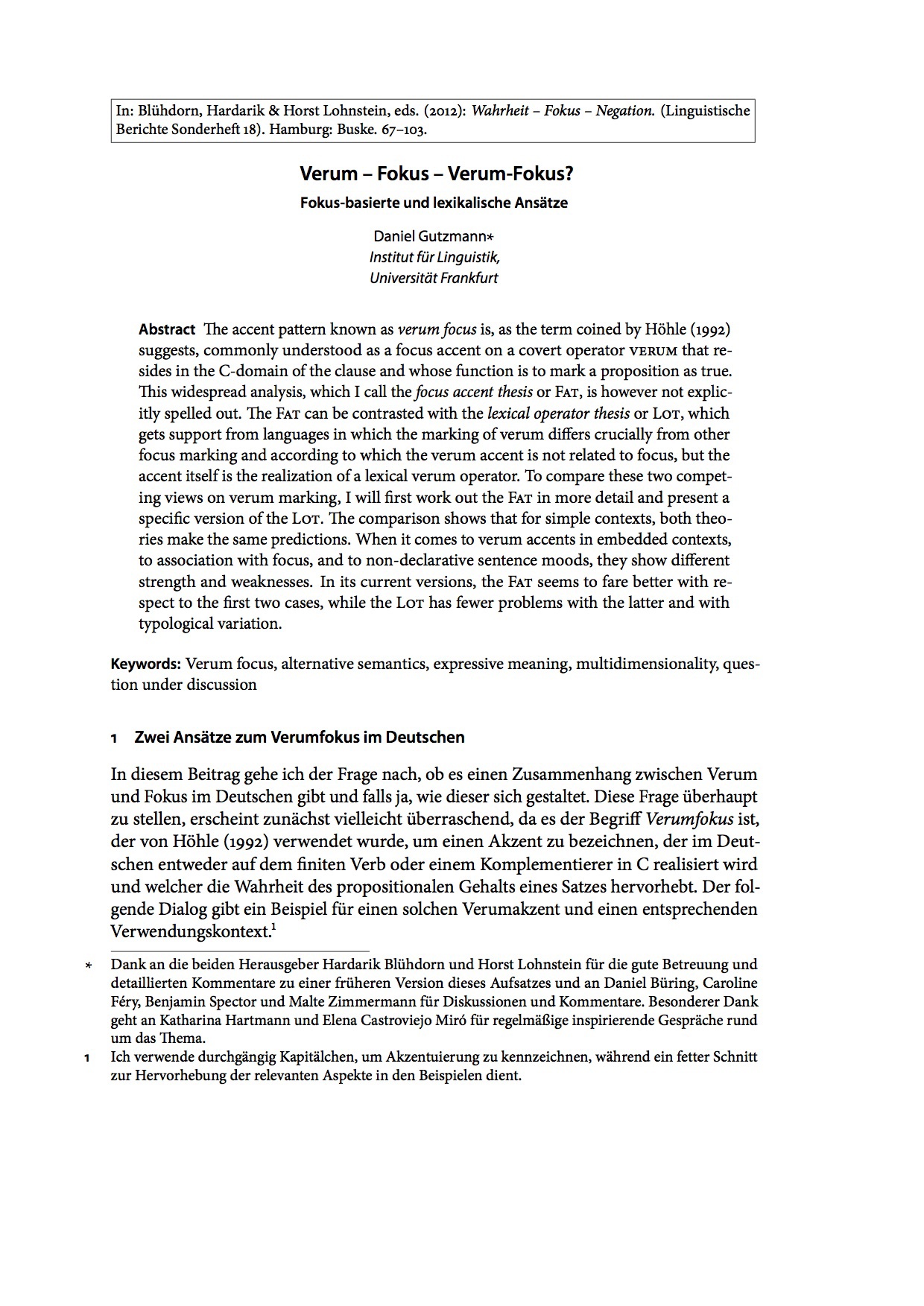 Back in December, 2010, Hardarik Blühdorn and Horst Lohnstein organized a workshop on Wahrheit – Fokus – Negation at the IDS in Mannheim. Based on the talks given in Mannheim, they edited a volume on verum focus which just went to print and which will soon appear as a special issue of Linguistische Berichte. My contribution is titled “Verum – Fokus – Verum-Fokus?” and addresses the question of whether verum focus really is just ordinary focus or whether it is only superficially similar to it. I present (non-conclusive) evidence and arguments for both positions. A manuscript of the paper can be downloaded here. And here is the abstract:
Back in December, 2010, Hardarik Blühdorn and Horst Lohnstein organized a workshop on Wahrheit – Fokus – Negation at the IDS in Mannheim. Based on the talks given in Mannheim, they edited a volume on verum focus which just went to print and which will soon appear as a special issue of Linguistische Berichte. My contribution is titled “Verum – Fokus – Verum-Fokus?” and addresses the question of whether verum focus really is just ordinary focus or whether it is only superficially similar to it. I present (non-conclusive) evidence and arguments for both positions. A manuscript of the paper can be downloaded here. And here is the abstract:
The accent pattern known as verum focus is, as the term coined by Höhle (1992) suggests, commonly understood as a focus accent on a covert operator VERUM that resides in the C-domain of the clause and whose function is to mark a proposition as true. This widespread analysis, which I call the focus accent thesis or FAT, is however not explicitly spelled out. The FAT can be contrasted with the lexical operator thesis or LAT, which gets support from languages in which the marking of verum differs crucially from other focus marking and according to which the verum accent is not related to focus, but the accent itself is the realization of a lexical verum operator. To compare these two competing views on verum marking, I will first work out the FAT in more detail and present a specific version of the LAT. The comparison shows that for simple contexts, both theories make the same predictions. When it comes to verum accents in embedded contexts, to association with focus, and to non-declarative sentence moods, they show different strength and weaknesses. In its current versions, the FAT seems to fare better with respect to the first two cases, while the LAT has fewer problems with the latter and with typological variation.